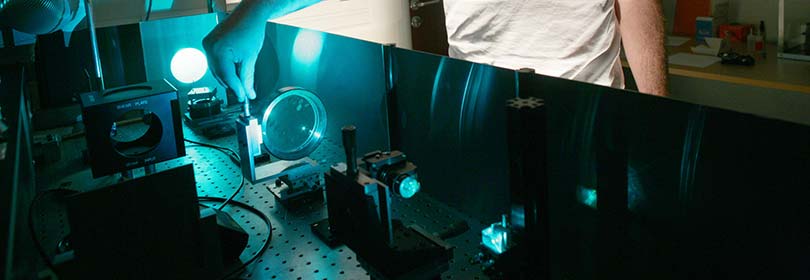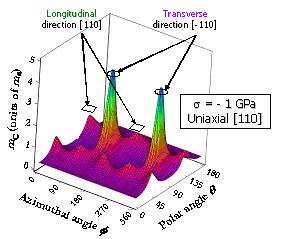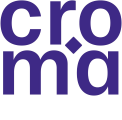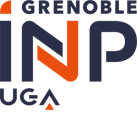Our sites
eServices
- Grenoble-Savoie Directory
- Maps & Directions
- CROMA Grenoble
- CROMA Chambéry
 Connexion
Connexion
 Connexion
Connexion

 > Research > CMNE > Modeling and Simulation
> Research > CMNE > Modeling and Simulation

Calculation of the hole conduction mass reduction
due to a longitudinal compressive stress along the
[110] direction. In contrast, the transverse mass
almost keeps its unstrained value.
An analytical model of electron and hole mobility in strained silicon is being developed in order to describe low field transport along any channel orientation with an arbitrary stress configuration (arbitrary stress tensor). The model, which runs in a few seconds on a standard PC, is based on an exact solution of the 6x6 k.p Hamiltonian coupled with a Kubo-Greenwood approach for mobility calculation. It can be used to support the interpretation of experimental results in terms of strain induced mobility variations or to find channel orientations and stress configurations that optimize carrier transport.

Contact: Alessandro Cresti
Recent publications:
• A. Cresti, Scaling properties of diffusive electronic transport in graphene nanoribbons functionalized with methyl-groups, J. Comput. Electron. 12, 94 (2013)
• P. Marconcini, A. Cresti, F. Triozon, G. Fiori, B. Biel, Y.-M. Niquet, M. Macucci and S. Roche, Atomistic boron-doped Graphene Field-Effect Transistors: A Route toward Unipolar Characteristics, ACS Nano 6, 7942 (2012)
• S. Roche, B. Biel, A. Cresti and F. Triozon, Chemically enriched graphene-based switching devices: A novel principle driven by impurity-induced quasibond states and quantum coherence, Physica E 44, 960 (2012).
• A. Cresti, A. Lopez-Bezanilla, P. Ordejón and S. Roche, Oxygen surface functionalization of graphene nanoribbons for transport gap engineering, ACS Nano 5, 9271 (2011).
Contact: Marco Pala
Recent publications:
• A. Braggio, M.G. Pala, M. Governale, J. König, Superconducting proximity effect in interacting quantum dots revealed by shot noise, Solid-State Communications 151, 155, (2011).
• D. J. Eldridge, M.G. Pala, M. Governale, J. König, Superconducting proximity effect in interacting double-dot systems, Physical Review B 82, 184507 (2010).
• D. Futterer, M. Governale, M.G. Pala, and J. König, Nonlocal Andreev transport through an interacting quantum dot, Physical Review B 79, 054505 (2009).
• M. Governale, M.G. Pala, and J. König, Real-time diagrammatic approach to transport through interacting quantum dots with normal and superconducting leads, Physical Review B 78, 069902 (2008).
• M.G. Pala, M. Governale, and J. König, Non-Equilibrium Josephson and Andreev Current through Interacting Quantum Dots, New Journal of Physics 9, 278 (2007).

|
The increasing need for autonomous applications demands the development of efficient energy harvesting techniques, mainly based on thermoelectricity, piezoelectricity or photovoltaic effect. In the last decade, material nanostructuration has allowed a significant increase of the thermoelectric ZT factor of merit thanks to the combined effect of thermal conductivity decrease and moderate impact on the electron conductivity. In our group, we focus on semiconductor nanowires, which have been experimentally seen to be very promising in this respect. We describe the interatomic coupling by a valence force model, which is able to account for experimentally relevant sources of disorder such as roughness, and estimate the thermal conductivity by the Green’s function approach. The combination with electronic transport simulation, for the calculation of conductivity, Seebeck coefficient and electronic thermal conductivity, allows us to estimate the ZT factor and to explore new possible roots for its engineering. lead. |
Contact: Alessandro Cresti , Marco Pala
See for instance: G. Ardila, A. Kaminski-Cachopo, M. Pala, A. Cresti, L. Montes, R. Hinchet, J. Michallon, M. Daanoune, M. Mouis, Towards self-powered systems: using nanostructures to harvest ambient energy, 2nd Ukrainian-French Seminar, April 8-11 2013, Kiev, Ukraine
Date of update October 15, 2020





